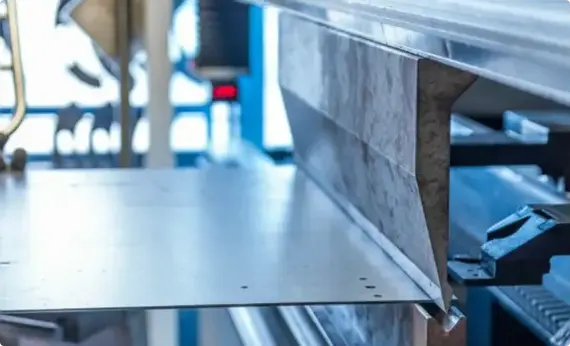
S32750/2507 Duplex stainless steel
S32750/2507 super duplex stainless steel is a material with excellent properties that plays an important role in many industrial fields.
S32750/2507 super duplex stainless steel is a material with excellent properties that plays an important role in many industrial fields.
Chemically, S32750/2507 super duplex stainless steel typically contains about 24 to 26 percent chromium, 6 to 8 percent nickel, 3 to 5 percent molybdenum, and 0.24 to 0.32 percent nitrogen. This unique combination of components gives it outstanding properties. First and foremost, S32750/2507 super duplex stainless steel offers excellent resistance to chloride stress corrosion cracking. In the oil and gas industry, offshore platforms and other fields, often face harsh corrosive environments, and it can effectively resist such corrosion. Secondly, it possesses high strength and can withstand large loads. Meanwhile, its good corrosion resistance is also a highlight, with strong resistance to organic and inorganic acids, especially those containing chlorides.
In terms of physical properties, S32750/2507 super duplex stainless steel has a density of about 8.03g/cm³ and a melting point of 1300 - 1390℃. The mechanical properties are also excellent, with tensile strength ≥ 800MPa at room temperature, yield strength ≥ 550MPa, elongation ≥ 15%, and hardness ≤ 310. Moreover, due to its low carbon content, it greatly reduces the risk of grain boundary carbide precipitation during heat treatment and has a strong resistance to intergranular corrosion.
S32750/2507 super duplex stainless steel has a wide range of applications in several fields. In the oil and gas industry, it can be used in a variety of equipment; on offshore platforms, it can be used for heat exchangers, underwater equipment, etc.; it can also be used in the chemical processing industry and vessels and piping industry. It can also be used in desalination, high-pressure RO equipment and submarine pipelines. In the manufacture of mechanical parts, as a high-strength, corrosion-resistant parts of the material of choice. In short, S32750/2507 super duplex stainless steel is widely used in a variety of corrosive environments and strength-demanding applications due to its excellent performance.
In the processing and use of S32750/2507 super duplex stainless steel, need to pay attention to follow the corresponding specifications and requirements. For example, the solution treatment temperature should be at least 1925°F (approximately 1052°C), followed by rapid air or water quenching; the use of 2507/P100 filler metal is recommended for welding. Only then can the advantages of S32750/2507 super duplex stainless steel be fully realized.
stainless steel processing
The manufacture of stainless steel involves a series of processes. First, the steel is melted, and then it is cast into solid form. After various forming steps, the steel is heat treated and then cleaned and polished to give it the desired finish. Next, it is packaged and sent to manufacturers, who weld and join the steel to produce the desired shapes.

Melting and Casting
The raw materials that constitute a stainless steel item are placed together and melted in a giant electric furnace. Intense heat is applied rigorously for a period of 8 to 12 hours during this step. Once the melting is complete, the molten steel is cast into desired semi-finished forms. Some of the most common forms or shapes include slabs, blooms (rectangular shapes), billets (these could either be round or square), rods, and tube rounds.

Forming
In the second stage, the semi-finished steel shapes undergo a series of forming operations. For instance, the stainless steel is hot rolled (heated and passed through enormous rolls). The blooms and billets mentioned above are converted to bar and wire. The slabs on the other hand are formed into plates, strips or sheets. It is very common to turn semi-finished steel shapes into bars, as it is the most versatile stainless steel form (it comes in all grades and sizes). You have round, square, octagonal, and hexagonal bars, each suitable for a different type of application.

Heat Treatment
The various stainless steel forms undergo a thorough annealing process during this step. Annealing is another name for heat treatment where the stainless steel is heated and cooled in a controlled environment. The purpose of this heat treatment is to relieve the pent-up stress inside the stainless steel and soften the material to make it more suitable for a wide variety of applications. The people in charge of carrying out the annealing process have to be very careful about the conditions as even the slightest of changes in the temperature, pressure, duration, or cooling rate could result in a faulty product.

Descaling
During the annealing process, a certain amount of scale appears on the surface of the stainless steel. This scale can be removed using a number of different processes that are collectively known as descaling. Pickling is one of the more common methods of carrying out the descaling process.

Cutting
The semi-finished, heat-treated, and descaled stainless steel forms are cut into specific shapes in this step. Mechanical cutting is performed with the aid of guillotine knives, blanking, nibbling, and high-speed blades.

Finishing
Finishing is applied to help the stainless steel product achieve its signature aesthetically appealing appearance. Finishes are also needed to make the stainless steel product smooth and easier to clean, which is a top requirement in sanitary applications.
